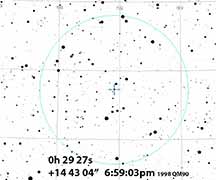
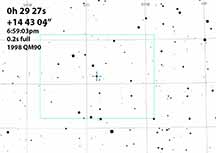
This is a good event but quite short. Only 0.2s. But the star is bright at 11.6 and high in the sky and at 1x or 2x it will be do-able, in my experience. Alt=61 Az=225 in constellation of Pisces just east of Algenib (lower left corner of the Great Square). But the gibbous moon is only 13 degrees away, so sky will be bright.
 |
 |
Kirk and I got data. Karl was positioned such that the target went behind a redwood tree before the event.
I went to Sky Park in Scotts Valley for this, setting up at the foot crossing, about 25 ft SE of the crossing on the park side of the road. This is virtually on the centerline. Only 0.1 x asteroid radius south of the predicted centerline for my track. Kirk was almost in the same track, at 0.2x the asteroid radius south of the centerline. I did not get a well focused field, stars are small donuts and the donuts were very asymmetrical. Best to use TME or dynamic aperture in this cases. I used 2x. Lots of scintillation.
My best, I think, reduction was using TME-snap to. The curves looked a little quieter. There's one suspicous 2 pt drop 6 s after the predicted time, BUT, that moment also shows a large single point drop in star=ref1, and a smaller drop in star=ref2. So, I discount it as noise or a brief gust. At the predicted time, I still see no hint of an occultation.
Now, I was 10.2' of longitude east of Kirk, which translates to 0.72 s of time, so his central occultation time of 2:59:03.15 translates to 2:59:03.87 for my location.
|
In my hurry once I gave up on finding the perfect set up site, I never got the stars in true focus. Worse even than I thought. Donuts for stars. It required using a TME aperture with a tuned mask cutoff to get all of the significant light and not creep outward into sky pixels, for each star here. The target is at bottom right. |
TME apertures with centering, for both ref stars and the target, and empty sky (red) |
Target star. Several single point drops to near zero, but not valid. |
Zoomed in on the predicted time. No evidence of an event here. See below for the PyOTE light curve with Kirk's event moment translated to my longitude. |
I tried also to do dynamic apertures with "no centering" as I felt that with centering it was jumping around not on the brightest pixel of the crescent, and so much as to hurt the photometry. It did not yield an event at the observed time for Kirk. |
|
PyOTE light curve. Predicted time of event marked. |
Minimizing metric, zoomed in on predicted event time. Could the "?" a second later be a hint of a 1/25s occultation? But there are many such drops in my light curve, and that one does not line up with Kirk's main event. Unable to detect or verify. |
Sent off to Norm for IOTA on Jan 21 8pm
PyOTE found an event for me for 1998 QM90, last Sunday night, at 2x I was at the BD Eco reserve, Rick was at Sky Park, Karl was blocked by trees. I got strange results, a short 2-3 integration dip 1 sec later than predicted, then .8 sec after that a 3-point dip, then a 1-point dip .2 sec after. The event it found, the first dip, was only 0.0668 seconds long. The curve was noisy, but these were dips near the predicted time which was 2:59:02 for the eco reserve. And the target curve was well above background. Could it just be coincidental twinkling? When you get a chance, see if you got something similar in yours. My event, (the first dip) does pass the new NIE false positive test, the popup says if the noise sigma distance is greater than 2 then the event is unlikely to be noise, and I got 6.5. This is with a TME target aperture. I did try a nest of static apertures, but they also got the multiple dips, and I can see it visually stepping through playback. The TME aperture got a better NIE result than the static.
magDrop report: percentDrop: 73.0 magDrop: 1.422 +/- 0.245 (0.95 ci)
DNR: 3.12
D time: [02:59:03.1321]
D: 0.6800 containment intervals: {+/- 0.0060} seconds
D: 0.9500 containment intervals: {+/- 0.0154} seconds
D: 0.9973 containment intervals: {+/- 0.0311} seconds
R time: [02:59:03.1989]
R: 0.6800 containment intervals: {+/- 0.0060} seconds
R: 0.9500 containment intervals: {+/- 0.0154} seconds
R: 0.9973 containment intervals: {+/- 0.0311} seconds
Duration (R - D): 0.0668 seconds
Duration: 0.6800 containment intervals: {+/- 0.0087} seconds
Duration: 0.9500 containment intervals: {+/- 0.0199} seconds
Duration: 0.9973 containment intervals: {+/- 0.0362} seconds
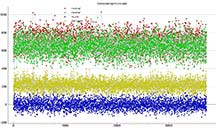 |
 |
 |
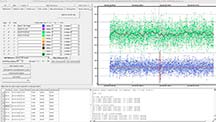 |
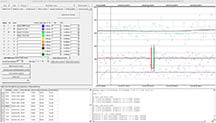 |
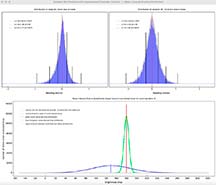 |